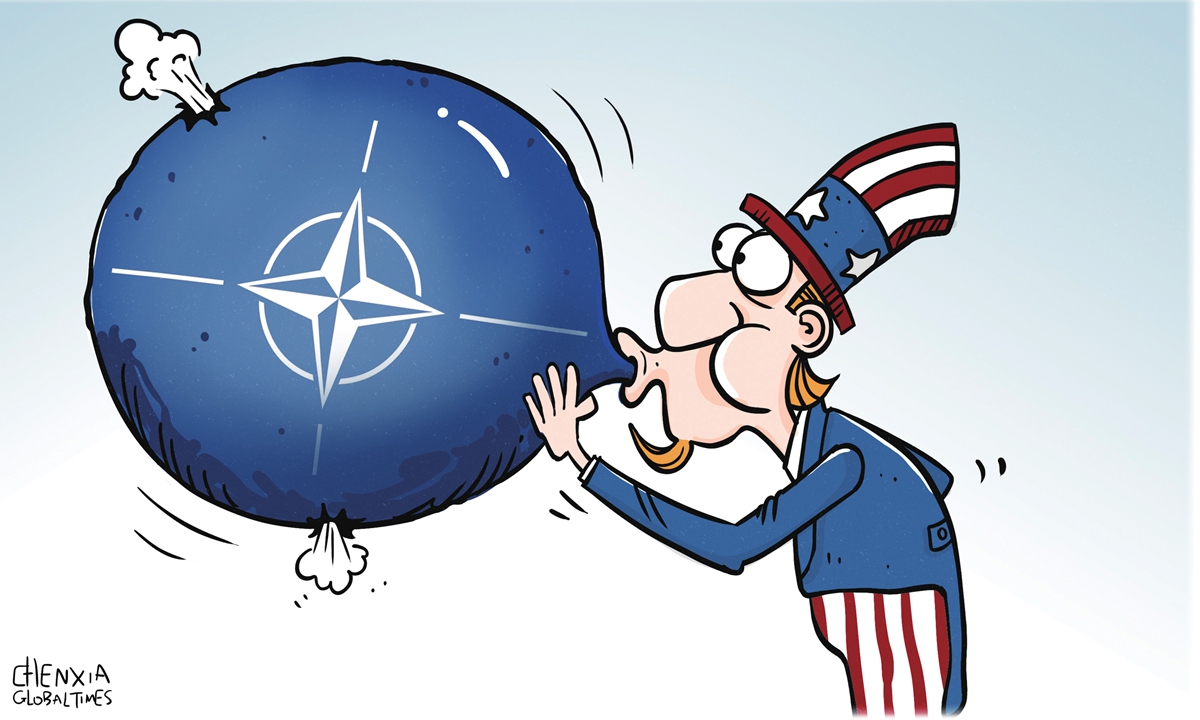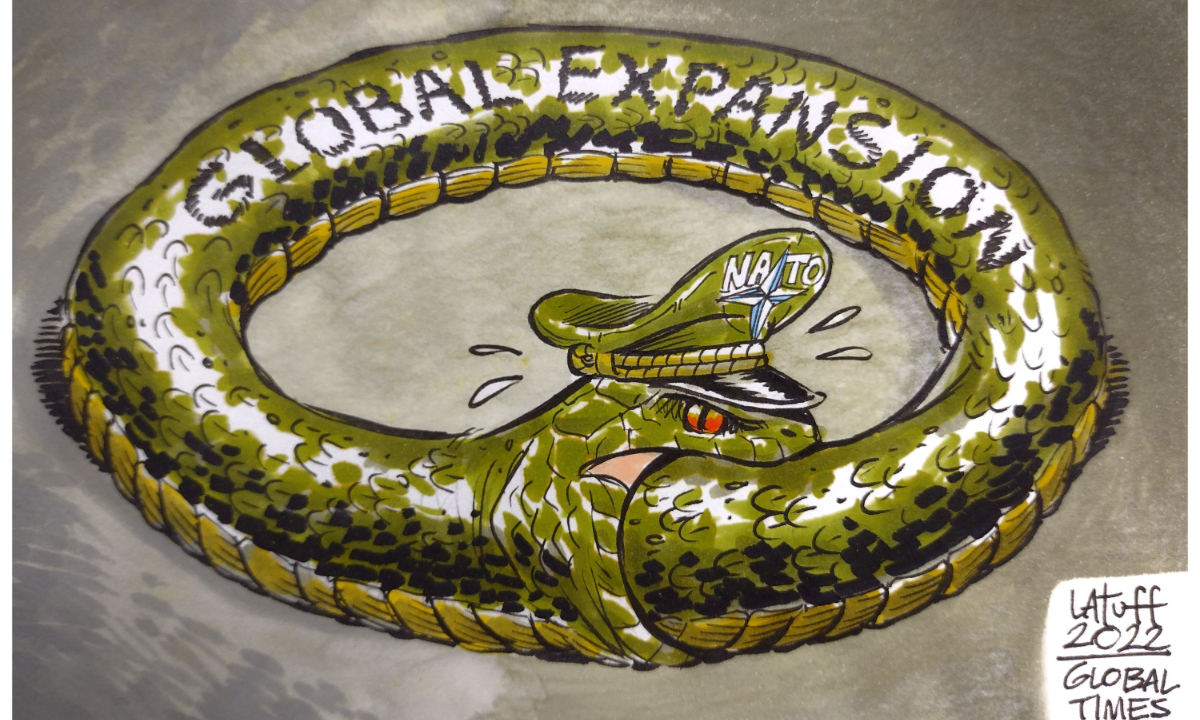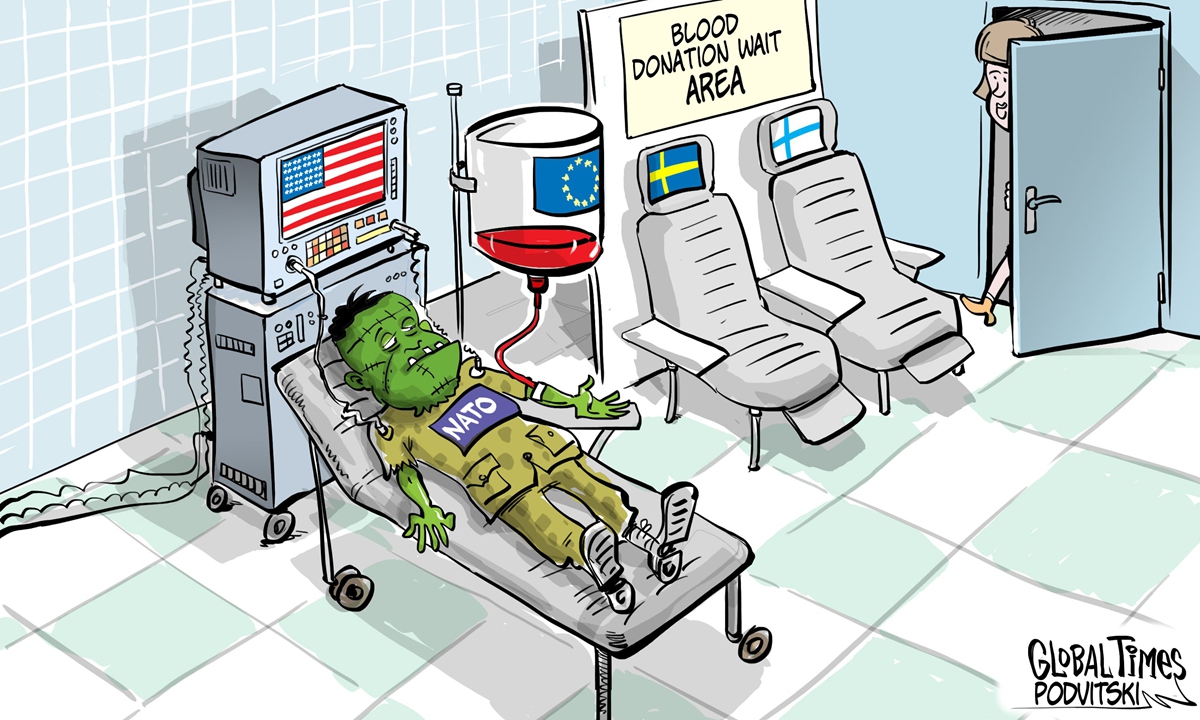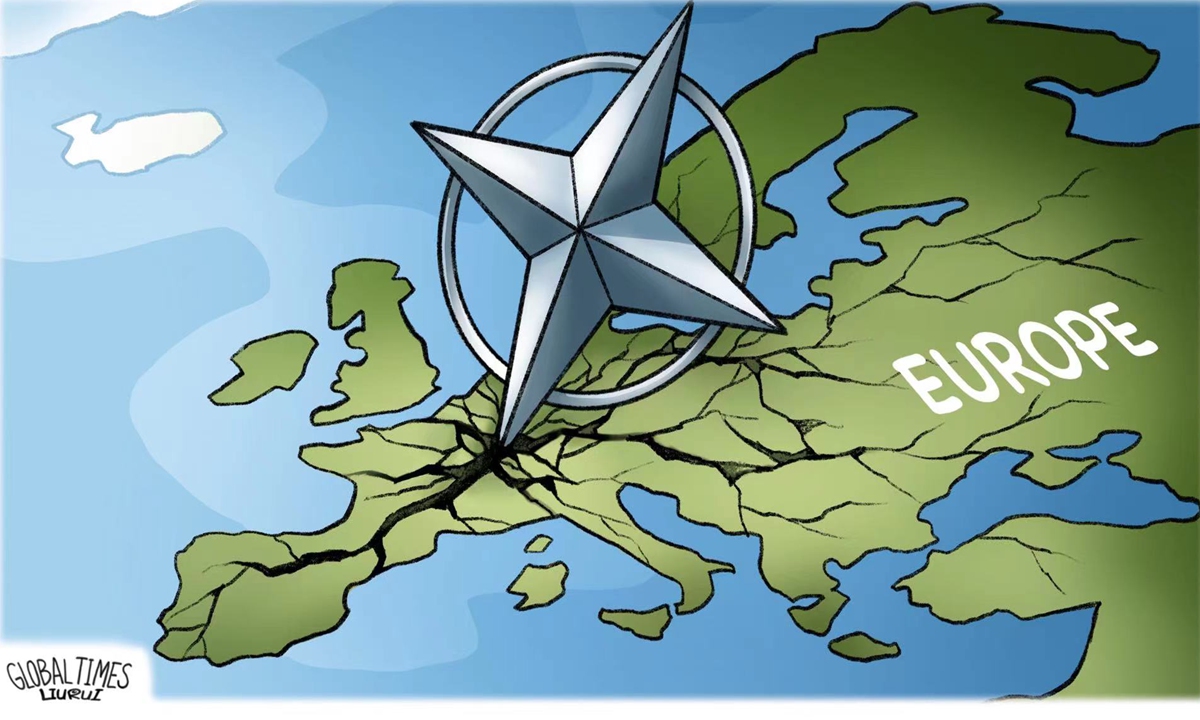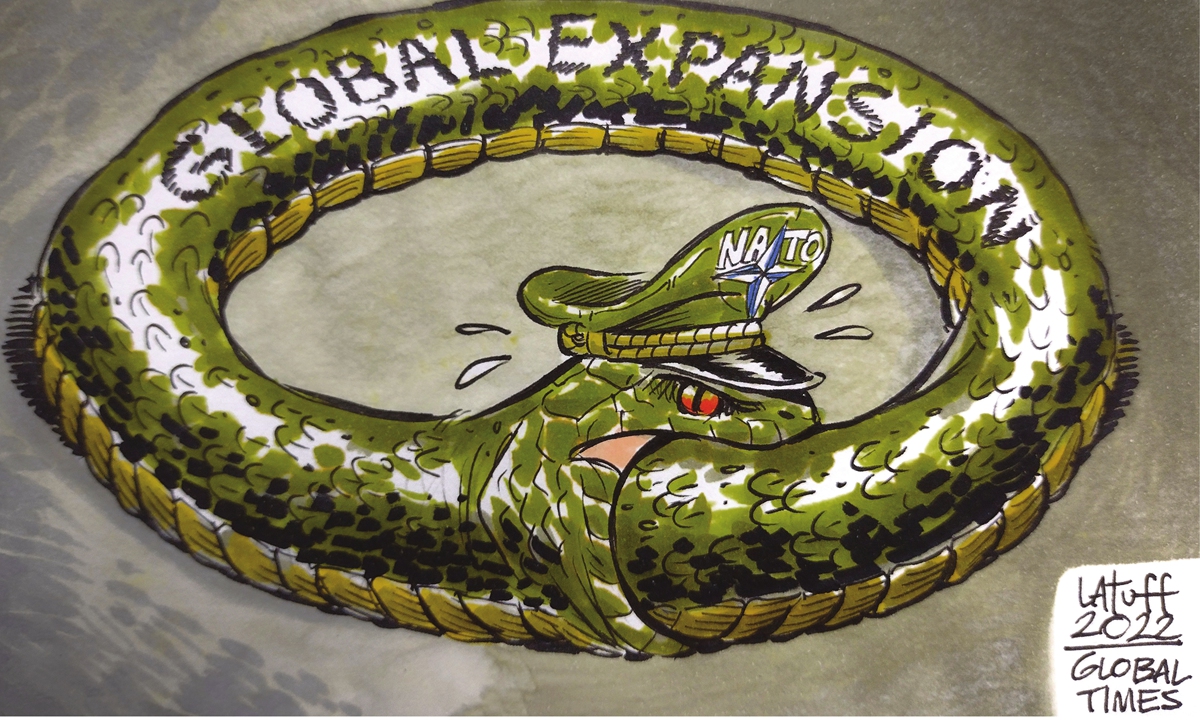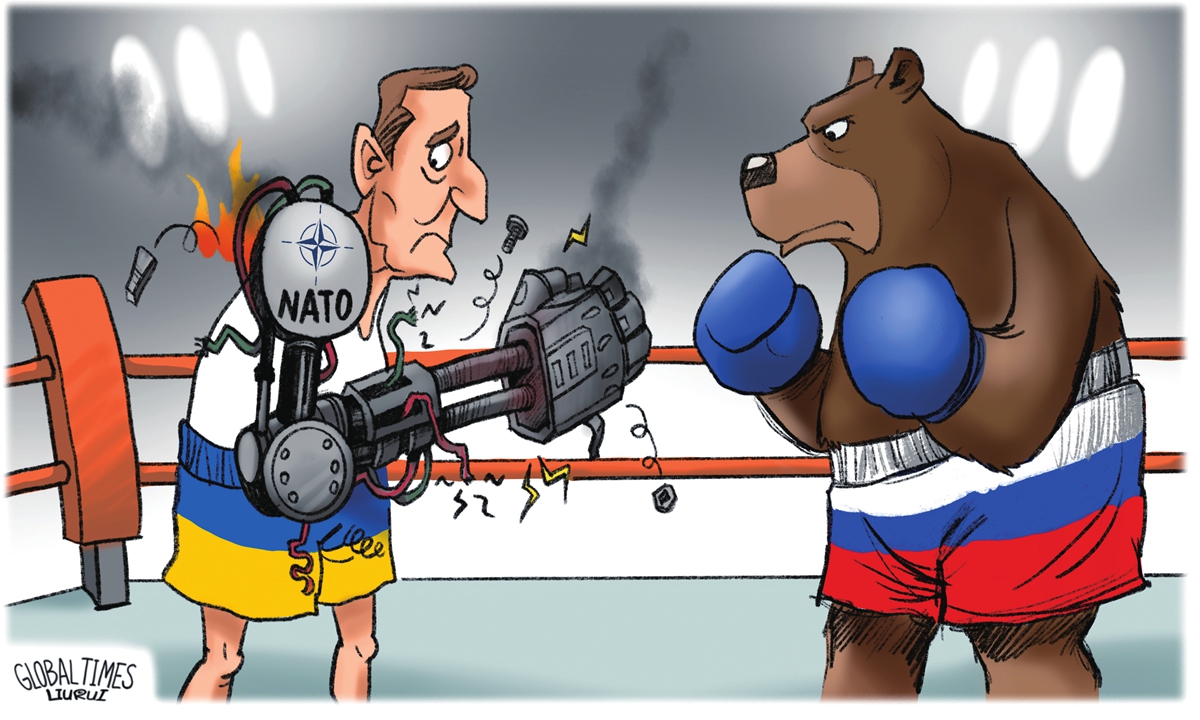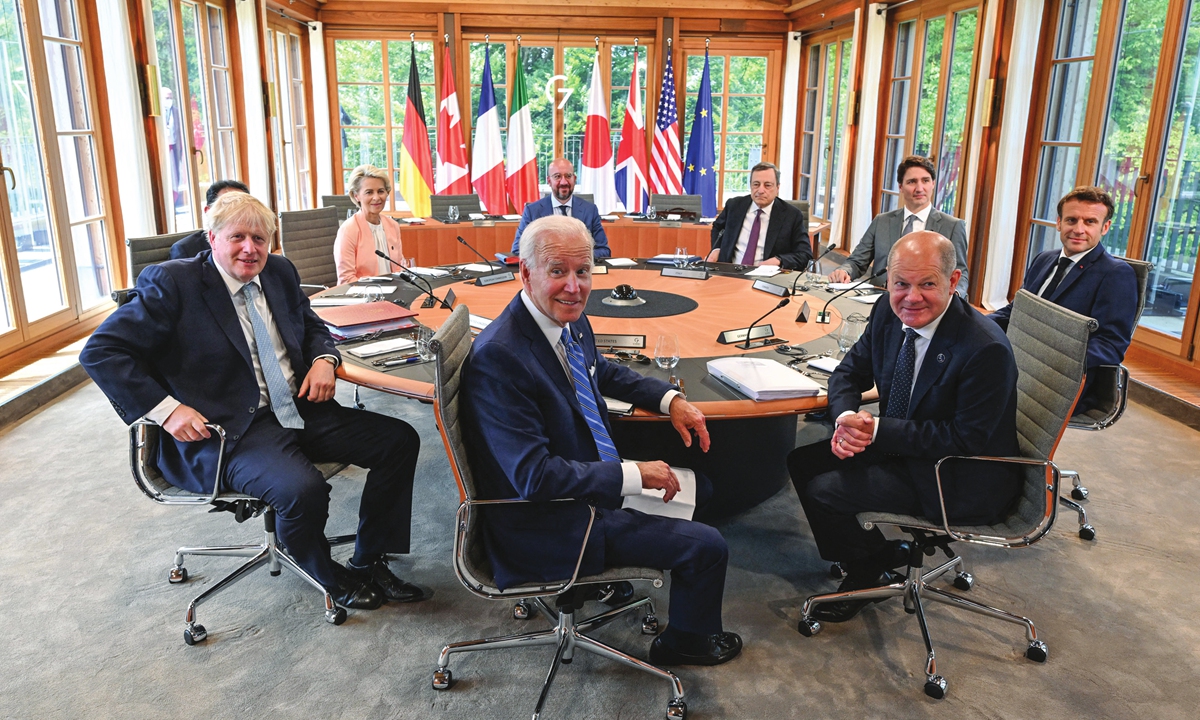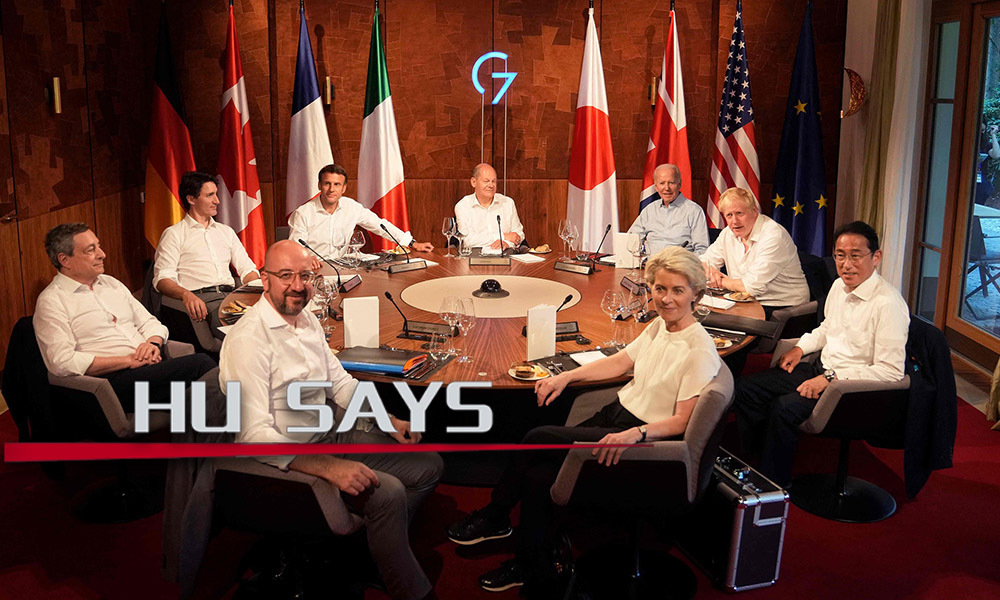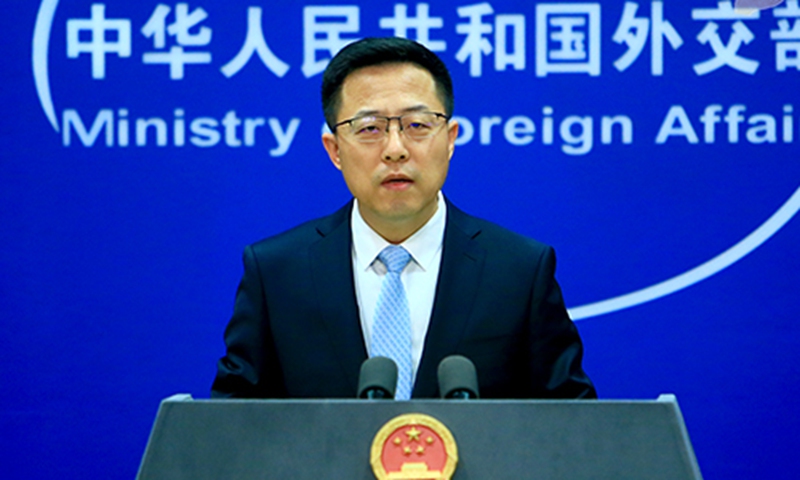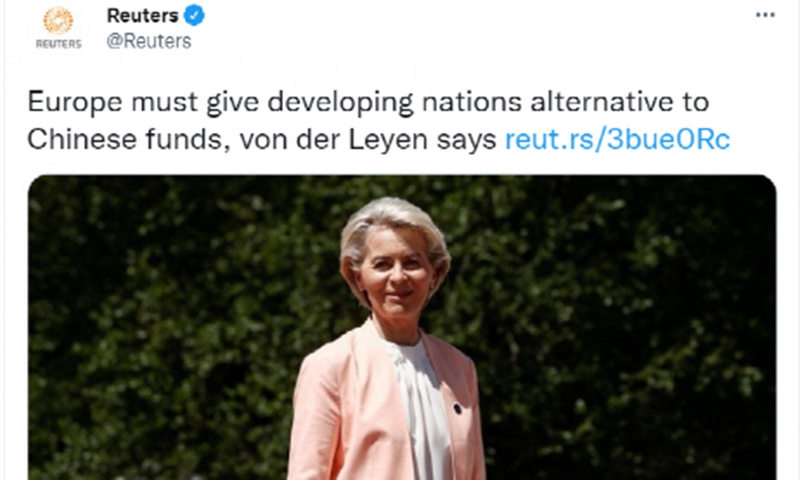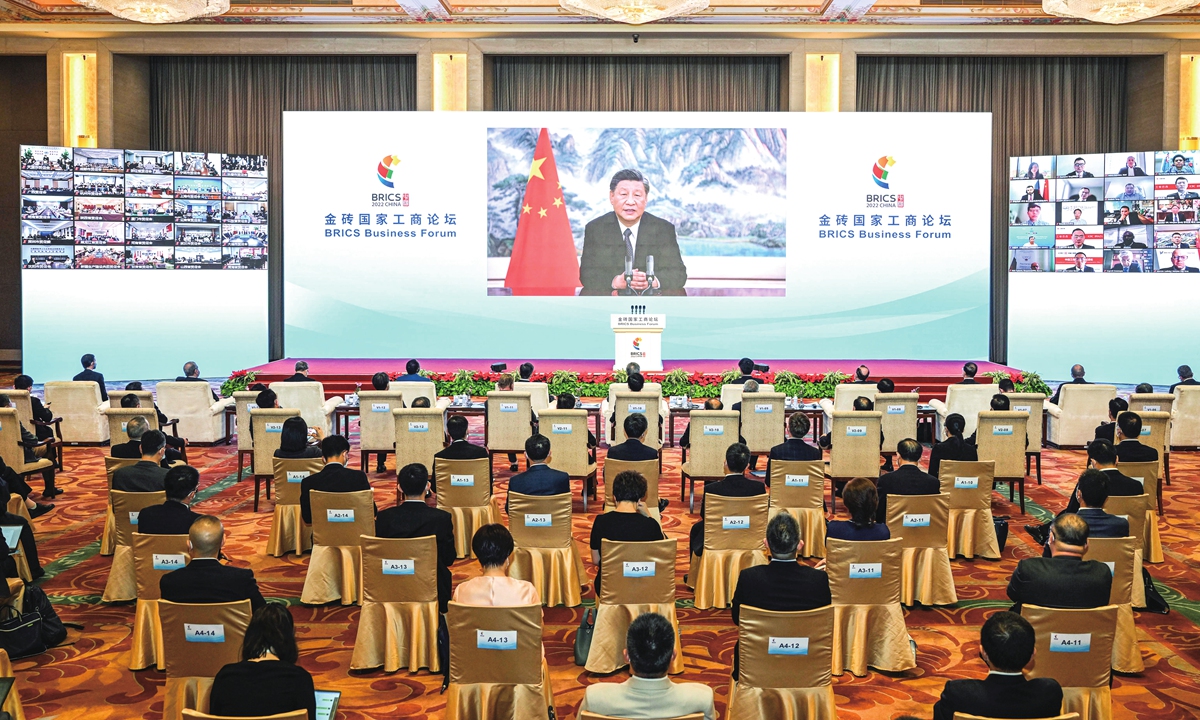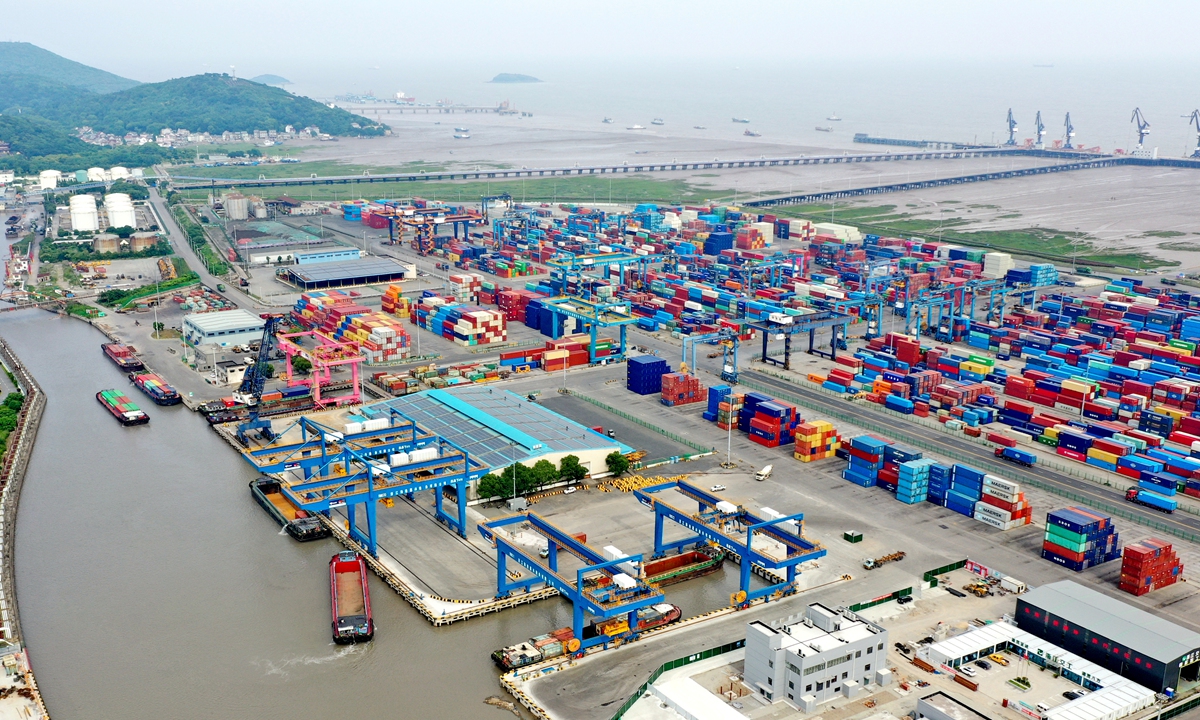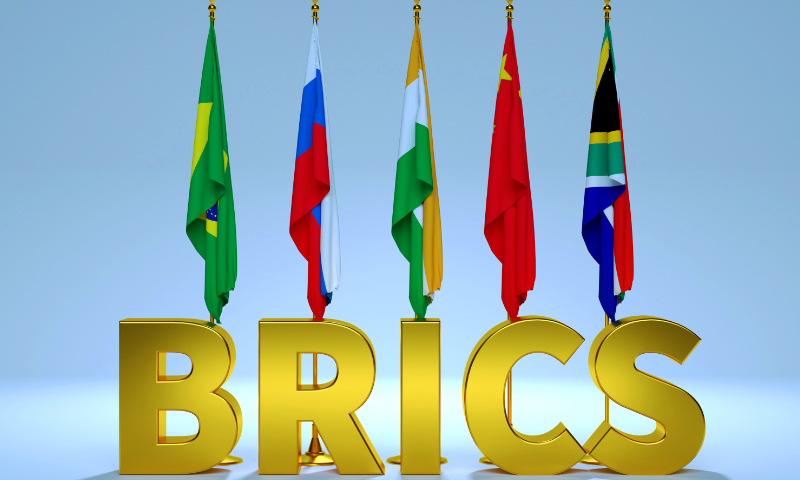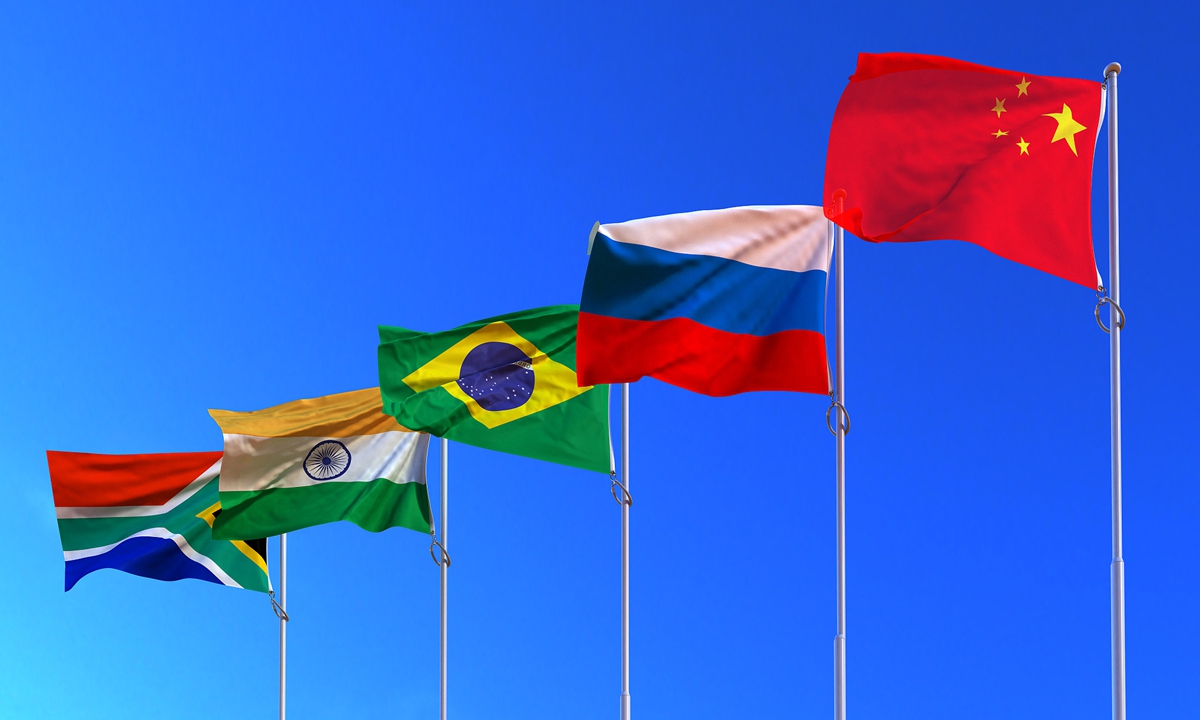These lifestyle changes will definitely not be easy but they could help stretch the ringgit and leave some extra cash in the wallet in these tough times.
Share This
Wednesday 29 June 2022
Food for thought on footing the bill
A lack of this important mineral could be causing you health problems without you even knowing it.
NATO’s expansion stumbles as members calculate costs
Europe will certainly not become more secure after this round of NATO expansion
There is a lack of mutual understanding and compromise in European culture, where countries are focused on maximizing their own security interests without regard for others. The US is certainly glad to see Europe in this state.
Editor's Note:
NATO, which is constantly looking for imaginary enemies and justifying its existence by inciting confrontation, is holding a summit from Tuesday to Thursday, and it also plans to extend its tentacles to the Asia-Pacific region. Behind its aggressive narrative, contradictions and divisions within NATO have become increasingly prominent. The Russia-Ukraine conflict is not going according to NATO's playbook. This series of articles will provide some clues regarding NATO's predicament. This is the fifth piece. NATO, the North Atlantic Treaty Organization, was established in 1949, but to this day it remains an important tool for suppressing the opponents of the West. The initiative to unite 12 countries originally belonged to the United States, which became the most powerful world leader after the end of World War II. The US was the foundation of the organization's military power, a source of economic and financial assistance to member countries. It goes without saying that not only the highest command posts belonged to the Americans, but they also defined strategic objectives at all stages of NATO's activities. The main mission of this organization from the very beginning was the unification of military and economic resources under the command of the US to prepare an all-out war against the Soviet Union. The countries of another military bloc, the Warsaw Pact Organization (ATS), led by the USSR, also became enemies. It was created only six years after NATO - in 1955. NATO played an important role in weakening the USSR and its allies. After the collapse of the Soviet Union and the dissolution of the Warsaw Pact in 1991, the question arose about the feasibility of continuing the existence of NATO. But the US, which really ruled the bloc, set a new task for it - to involve former ATS member countries and post-Soviet republics in its structure. This was considered necessary to expand the zone of America's strict control over Europe as the most important part of the world at that time. NATO was also used to "sweep" the European space during the war against Yugoslavia. NATO and its de facto twin in the field of economics and politics - the European Union - were used in organizing the "color revolution" in Kiev and provoking the current Ukrainian crisis. In these situations, the US uses NATO as a tool for dirty work, saving the US from the loss of "precious American lives" and the risk of retaliatory strikes on the territory of the US. NATO's successful fulfillment of its tasks in Europe led Washington to think about using the potential and experience of the bloc in another part of the world. Having recently identified China as the most serious threat to the international order, Washington is faced with a lack of resources to contain and suppress the growing Chinese power. In order to mobilize the existing resources, the Biden administration has developed a concept of Indo-Pacific security, strongly resembling a similar concept for the North Atlantic. The concept has already been reinforced by the creation of the Indo-Pacific Command of the US Armed Forces. Already available resources were activated - military alliances with Japan, South Korea and Australia. The AUKUS military group was created. The activity of the QUAD military-diplomatic group is stimulated. The creation of the Indo-Pacific Economic Framework was recently announced. But even these actions are not enough for Washington. Therefore, it is urgently necessary to extend the scope of NATO's responsibility to the Indo-Pacific region as well. Obviously, US efforts are aimed at uniting all Asian and European allies, their military, economic and geostrategic resources to create a new tool for the realization of American global ambitions. It can be conditionally called the Indo-Pacific Treaty Organization according to the patterns of NATO. Of course, the arrival of NATO to the East, especially since the new military bloc of the West, will threaten the security interests of Russia as a Pacific power. But first of all, it will be directed against China. Strengthening the militarization of the region will also contradict the interests of economic stability and security of ASEAN, APEC and other groupings of the region. Serious obstacles may arise in the way of implementing Biden's chess game. We are not talking about the fluctuations of European satellites in NATO such as "ready for anything" Poland, the "Baltic troika" or the Balkan neoplasms. It is unlikely that we will talk about England with its age-old anti-Chinese traditions and loyalty to Washington at the level of a conditioned reflex. But such large "stakeholders" as Germany, France, Spain and Italy may think hard about the consequences of entering into a military confrontation with China, taking into account their trade and economic interests. These powers are well aware of the benefits of bilateral trade with China, which amount to tens and hundreds of billions of euros. They are also aware of the intention of the White House to lift trade sanctions against China in an attempt to bring down the threatening increase in inflation. The role of trade and economic "cannon fodder" is unlikely to entice figures claiming some level of independence even within the framework of NATO. In Madrid, the leaders of significant European powers are unlikely to voice their doubts, but then they will try to "put on the brakes" in implementation of Biden's Indo-Pacific plan. Another important reason for avoiding the dubious honor of becoming a member of the anti-Chinese coalition may be Washington's inconsistency. Just two years ago, then US president Donald Trump reproached NATO member countries for the insufficiency of military efforts, the desire to "ride for free" and even promised to dissolve the military bloc. What will happen after the next presidential election? Will Trump come back? Won't those business and political circles that oppose the dispersion of the waning power of their power, for the concentration of resources on solving domestic economic and humanitarian problems, win? Europeans are already suffering losses from following Biden's anti-China course. The ratification of the China-Europe Comprehensive Investment Agreement has been disrupted. Taking into account the hostile policy of Poland and the Baltic countries, Chinese logistics companies are reviewing the routes of goods delivery to Europe via the Silk Road. Beijing is studying the experience of "crippling sanctions" against Russia. After all, Washington has threatened to impose similar sanctions not only in case of the aggravation of the situation around the Taiwan island, but even if China refuses to participate in sanctions against Russia. The US' convulsive attempts to return itself to the role of world hegemon are unlikely to succeed. But they can cause considerable harm to mutually beneficial relations between countries, which will be difficult to compensate quickly.The author is head of the "Russian Dream-Chinese Dream" analytic center of the Izborsk Club. opinion@globaltimes.com.cn
The sewage of the Cold War cannot be allowed to flow into the Pacific Ocean.
NATO to set stage for extending into Asia-Pacific, faces internal difference
On the heel of the G7 summit, NATO leaders are scheduled to convene in Spain from Tuesday to Thursday for their annual summit with the main focus on Russia and toughening up its stance toward China, while analysts said including China in the US-led military bloc's new strategic concept cannot help alleviate US divergences with the EU, especially on China, and severe domestic problems will also weaken Washington's ambitious plan to maintain hegemony.
This is also a shock to the Swedish and Scandinavian population, because they think that NATO is supposed ...
“NATO skeptics” in the US are exerting more pressure on the transatlantic relationship and weakening US leadership in ...
NATO’s failure does not only stay on the battlefield – it seems an entire US post-Cold War strategy ...
NATO is increasingly trapped in a predicament that it may feel difficult to escape.
Related posts:
G7 to raise US$600bil PGII to counter China’s initiative met with skepticism, mockery
Beyond the submarine feud, contains China's rise
Asean nations caught in a quandary over AUKUS Pact
Cold War schemer: Reminiscing in its past ‘victory,’ US brings color revolutions to 21st century to maintain its hegemony
That sinking feeling from Down Under: Australia, United Kingdom and United States (Aukus) pact
AUKUS plans to provide nuclear submarines to Australia seriously endangers nuclear non-proliferation
Tuesday 28 June 2022
G7 to raise US$600bil PGII to counter China’s initiative met with skepticism, mockery
G7 summit: Is western influence waning in a multipolar world?

Top shots: Leaders of the G7 at the gathering in southern Germany. Biden and other leaders relaunched the newly renamed “Partnership for Global Infrastructure and Investment” at the annual event. — AFP
G7 summit is more like a Western mobilization meeting for US diplomatic strategy
G7’s $600 billion PGII met with skepticism, mockery
US' program eyes geopolitics; 'objective impure'
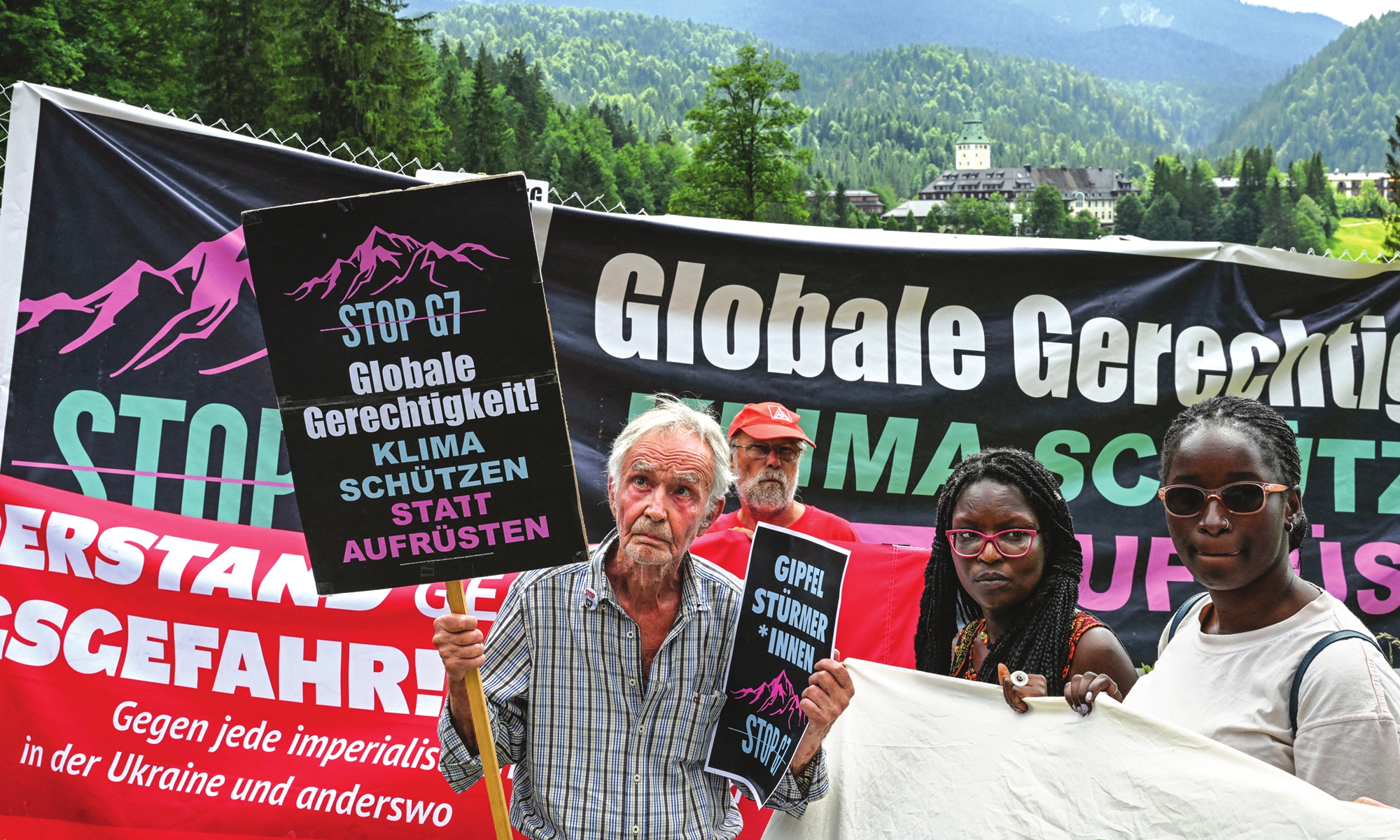
After US president Joe Biden and leaders from other Group of Seven (G7) nations proposed to raise $600 billion in the next five years to finance infrastructure projects in developing countries, a move generally interpreted by observers as intending to counter China's Belt and Road Initiative (BRI), economists expressed skepticism over the feasibility of such a program, citing reasons such as the US' strained government debt status, poor infrastructure construction abilities and past failure with a similar project. They also criticized the G7 proposal for having an "insincere" intention, as it was raised more from the perspective of launching a political competition with China, instead of really caring about the infrastructure situations in lower income countries. In this sense, it is unlikely to yield any project that could compare with China's flagship BRI projects, which focus on mutual connectivity, win-win, not decoupling and exclusionism. Government leaders from Group of Seven nations made a pledge on Sunday at their annual gathering to raise $600 billion in private and public funds over the next five years to finance infrastructure in developing countries, in a project called the Partnership for Global Infrastructure and Investment (PGII), a Reuters report noted on Monday. US president Joe Biden said that the US aims to mobilize $200 billion for the PGII project over the period through grants, federal funds and private investment to support projects that help tackle climate change, improve global health, digital infrastructure and gender equity. He highlighted several flagship projects, including a $2 billion solar development project in Angola, the report noted. Europe will mobilize 300 billion euros for the initiative, Reuters said. On the sidelines of the G7 Leaders' Summit in Germany, Biden said that the PGII is not aid or charity, but will "deliver returns for everyone", including the American people, according to a report by npr.org on Sunday. The G7 nations launched the PGII project only about one year after a very similar scheme was unveiled at the G7 conference last July. The scheme, named Build Back Better World, commonly known as B3W, is considered by many media outlets as a predecessor to the PGII. UK newspaper The Guardian, for example, used the word "relaunch" to imply that PGII is just a disguised version of B3W. Insincere intention Although the US government didn't explicitly mention the relationship between PGII and the China-proposed BRI program, many media outlets including Reuters as well as economists mentioned that the real intention of PGII is to counter China's BRI which has delivered many concrete projects since it was proposed in 2013. Hu Qimu, chief research fellow at the Beijing-based Sinosteel Economic Research Institute, said that China's global infrastructure cooperation has continued to yield results in recent years, standing in sharp contrast to some Western governments' "dereliction of duty" in this area. "The PGII is like a shouted slogan to ring-fence China's strategies, a kind of tactic to create an atmosphere of cracking down on China," Hu said, adding that it could also be a method used by Biden to pander to voters ahead of the US mid-term elections. Another international relations expert who requested anonymity also said that the US, which has no tradition of helping other countries in the field of infrastructure, would not suddenly change and take to the idea. "The real intent is to counter China's projects and compete with China," the person said. Observers found that the PGII's two pillars of clean energy and information/communications technology are particularly hostile to China, as the West has been smearing China over issues related to the solar power industry in Xinjiang and China's 5G technology, using security concerns as an excuse. Commenting on this policy direction, experts criticized the US-led program for lacking the sincerity of really caring about the infrastructure situations in developing countries, saying instead that it had a very "impure" objective. "If the G7 group only targets China's overseas infrastructure market for competition, history will prove that this kind of top-level planning that lacks the concept of common development will only become another short-lived project," Wang Jianjiao, director of the economic and trade cooperation department under the Silk Road Academy of Social Sciences, told the Global Times on Monday. Wang also noted that only when the US gives up its global cooperation model, which often attaches "unequal additional conditions", gets rid of its own debt predicament and reinvigorates the US' real economy will it have a chance of competing with China in overseas infrastructure markets. Unfeasible project Economists also noted that the PGII and its promised funding volume by the US government is never likely to become reality, considering the US' internal economic problems and unstable political situation. Qiu Wenxu, director of the industry development department under the Silk Road Academy of Social Sciences, said that if the US government really intends to materialize the $200 billion funding, it is unlikely to come mostly from private capital, as infrastructure projects have long investment cycles and relatively low yield rates, making them unattractive to private investors. "However, at the current time when the US' government debt is at a critically high level and it has hardly any budget to invest in foreign-bound infrastructure, Biden still needs to raise most of the money from private companies. In this sense, it's very likely that the $200 billion fund can't be raised to the full number," Qiu told the Global Times on Monday. He further stressed that the US does not have advantages in infrastructure construction, pointing out that it has hardly completed any large infrastructure projects in its own country in the past 10 years, not to mention abroad. For example, California's high-speed rail, a flagship US infrastructure project, is "tens of billions of dollars over budget and years behind schedule," according to a report by kqed.org in May. Some experts also noted that the US' changing political situation is also casting uncertainties over implementation of the funding. "It would be even more difficult to convince the US Congress to invest overseas, if after the midterm elections the Democrats lose the majority of House of Representatives," Lü Xiang, an expert on US studies and research fellow at the Chinese Academy of Social Sciences, told the Global Times, on Monday. In fact, analysts have pointed out that the PGII funding would in fact add liability to Biden's already poor approval rating in the US, given the much weakened domestic economy due to galloping inflation, among other social issues. The difficulties in raising funds for such a project were already shown in the PGII's predecessor project B3W, which some media outlets and people regarded as a failure. An article by Foreign Affairs, for example, said that the B3W project has " languished", while a Guardian report noted that "little had been heard of" B3W since its launch. According to the Foreign Affairs article, the US' commitments to global infrastructure renewal only came to about $6 million under the B3W project in one year after its launch, which is "a far cry" from the billions Biden promised at the beginning. "Judging from the B3W implementation, it has high probability that the PGII will be another empty promise," Qiu said. BRI success to continue Economists also said that even with competition and certain countries' attempts to smear the BRI, the benefits and achievements of BRI is obvious to all, and that BRI investment will likely continue to surge in the future regardless of the volatile global political situation. Chinese Foreign Ministry Spokesperson Zhao Lijian said on Monday that China welcomes any initiative to promote global construction of infrastructure. "We believe that one initiative is not meant to replace another. However, we oppose the act of using the name of infrastructure to promote geopolitical schemes," he said. Liang Haiming, dean of the Belt and Road Institute at Hainan University, also told the Global Times that even if Western countries loan money to developing countries to build infrastructure projects, China might benefit from such a program, as many countries would purchase China's construction materials as they are known for being cost effective. Qiu also said that China's BRI has become one of the largest international cooperation platforms in past years, as the country does not view infrastructure construction projects as the ultimate purpose, but aims to help countries consolidate economic development foundations by improving their infrastructure construction.
In the first five months, China's non-financial foreign direct investment in countries along the BRI route rose 10.2 percent to about $8.2 billion, data from the Ministry of Commerce showed.
Aiming to keep pressure on Russia and seek solidarity to cope with challenges from so-called systemic rival China, ...
To a certain extent, all Western countries have gained strategic benefits from the China-US competition. Meanwhile, Washington has ...
A spokesperson for China’s Foreign Ministry on Monday refuted G7 officials’ claims of “debt trap” created by the ...
EC President von der Leyen roasted for anti-China agenda in new infrastructure funding initiative
Related posts:
US loses focus by inserting anti-China in infrastructure plan
Belt-road changes world order
Prospering with Belt and Road to reap the benefits of China's initiative
Asian Infrastructure Investment Bank, opens to lay down milestone for global economic governance
Connected by mountains and waters
NATO’s expansion stumbles as members calculate costs
U.S.-backed smear campaign created 'debt trap' narrative to defame BRI
Sunday 26 June 2022
Take second boosters
New Covid-19 infection wave may emerge sooner than forecast
Senior citizens and individuals with chronic illnesses have been reminded to take their second Covid-19 booster shots as a potential new Covid-19 infection wave may emerge sooner than forecast, says the Health Minister.
Khairy Jamaluddin said this was based on the number of cases reported in recent days both here and across the Causeway. “Over the past two to three days we have been reporting more than 2,000 cases a day against 1,000 and 2,000 previously. “Today (Thursday), we have 2,796 cases with two new clusters reported at institutions of higher learning. “So if we are not cautious, the cases will keep on increasing in the coming weeks,” he told reporters after officially opening the otorhinolaryngology centre and sleep lab at Hospital Rembau. On Tuesday, Khairy said Covid-19 cases would fluctuate and a potential new infection wave might emerge in the next few months, despite the current situation being under control. He said Malaysians ought to know the latest developments so that they can take preventive measures against contracting the virus.Young patients: Khairy visiting a ward for children with hearing problems after officially opening the otorhinolaryngology centre and sleep lab at Hospital Rembau. — Bernama
Booster Shots and Additional Doses for COVID-19 Vaccines
The CDC has approved a second COVID-19 booster for people age 50 and older that can be given 4 months after a first booster. People with moderate to severe ..12.6 million cash aid to benefit from BKM for the B40 group ?
12.6 million to benefit from BKM
BKM cash aid totalling RM8 bil, largest in country's history, says Zafrul
PM announces additional assistance under Keluarga Malaysia package
The B40 income group will receive additional cash assistance under the Bantuan Keluarga Malaysia (BKM) aid to help alleviate their financial burden. Prime Minister Datuk Seri Ismail Sabri Yaakob, in a special announcement, said each household receiving the BKM aid would receive RM100 while single individuals would get RM50. The move will benefit over 8.6 million people, comprising four million households, 1.2 million senior citizens, and 3.4 million single individuals, he said. He added that the payment would be made in four stages starting June 27.The decision to provide the financial assistance was taken after the government took into consideration the rising cost of living including increase in food prices, he said.
For more information and to check the application status, the public can visit https://bkm.hasil.gov.my/ from Monday.
Ismail Sabri also said that the temporary price subsidy for bottled cooking oil introduced during the Covid-19 pandemic would be discontinued from July 1. The subsidy was for the 1kg, 2kg, 3kg and 5kg bottled cooking oil to help the rakyat facing difficulties during the pandemic. “The government decided not to extend the subsidy for bottled cooking oil as it does not meet the initial goal of the initiative to help those affected by the pandemic. “We also found that the assistance provided was misused by certain people including the commercial sector, industries and because of smuggling,” he said, adding that the oil subsidy cost the government RM55mil per month, which was initially slated for only three months from Aug 2021. He, however, clarified that the subsidy for cooking oil in 1kg packets that was first announced in 2007 was still in effect. “There was talk that the subsidy for cooking oil in packets was removed. It was not and is still subsidised,” he said. The government has spent RM4bil in subsidies for cooking oil this year, compared to RM500mil in 2020 and RM2.2bil in 2021.
“The government subsidised 60,000 tonnes of cooking oil, which is more than the public requirement of 55,000 tonnes per month,” he added, referring to the 1kg packet cooking oil.
Here's How To Apply For Bantuan Keluarga Malaysia 2022 BKM ...
Here’s How To Apply For Bantuan Keluarga Malaysia 2022 (BKM)
https://www.therakyatpost.com/news/malaysia/2022/01/03/heres-how-to-apply-for-bantuan-keluarga-malaysia-2022-bkm/
Related stories:
Saturday 25 June 2022
BRICS summit kicks off, calls grow for parallel payment system to counter US hegemony
How does BRICS continually play its role in the world?
It's been 16 years since the foundation of the BRICS mechanism was laid. China hopes to work with all BRICS countries to respond to the major concerns of the international community and build a more comprehensive, closer, more practical and inclusive partnership. Even more, China hopes to keep its promises to the 2030 Agenda for Sustainable Development Goals.Against current risks and challenges, the participants also pledged to ensure that the customs authorities of BRICS countries continue to work together to safeguard the international supply chain and promote rapid economic and trade recovery among BRICS countries. In this upcoming episode of "The Chat Room", we talk about how does BRICS continually play its role in the world. Also, focusing on the member states' achievements and challenges under BRICS, we invite five guests from BRICS countries to share their opinions. How does Sino-Indian cooperation play its role in the world? What's the current economic situation of BRICS? What roles has BRICS found itself in the world? How should we see BRICS+ in the future? #BRICS2022
China's Xi Slams Sanctions for 'Weaponizing' World Economy at BRICS
BRICS-led New Development Bank approaches 7th anniversary
China will host the 14th BRICS Summit on June 23 and Chinese President Xi Jinping will join with the leaders of Brazil, India, Russia and South Africa via video link to discuss issues of mutual concern as part of the summit themed around ushering in a new era for global development. The New Development Bank, established in 2015 by the BRICS countries, will soon celebrate its 7th anniversary. Tian Wei talks to the bank's Brazilian president Marcos Troyjo about his visions for the multilateral institution.#BRICS2022
Aerial photo taken on June 17, 2022 shows the headquarters building of the New Development Bank (NDB), also known as the BRICS bank, in east China's Shanghai.(Photo: Xinhua)
In a keynote speech at the opening ceremony of the BRICS Business Forum on Wednesday, Chinese President Xi Jinping called on the BRICS business community to expand cooperation on cross-border e-commerce, logistics and local currencies. As the 14th summit of the BRICS, a group of major emerging market economies comprising Brazil, Russia, India, China and South Africa, kicked off on Wednesday, there are growing calls from bankers and economists in BRICS countries, especially Russia, for the bloc to expand national currency settlements and lending to counter the US' weaponization of the dollar. Russian President Vladimir Putin said in a welcome address to BRICS Business Forum participants on Wednesday that the issue of creating an international reserve currency based on a basket of currencies is under review, Russian news agency TASS reported. "The BRICS and other interested nations need to talk about setting up their own independent global financial system - whether it would be based on the Chinese currency or they will agree on something different. They need to debate this," Sergey Storchak, chief banker of Russian bank VEB.RF, told the Global Times in a video interview on Tuesday. Storchak said that he hopes during China's presidency of this year's BRICS summit, member countries have open discussions on what really needs to be done. VEB.RF is a major financial development institution in Russia that has been excluded from the SWIFT system. There has been an ongoing discussion within the BRICS to accelerate payments in national currencies for years, and the need is becoming particularly urgent after the US removed some Russian banks from the SWIFT global interbank payments system and forced other economies to pay for its economic problems with sizeable financial tightening. "If the voices of emerging markets are not being heard in the coming years, we need to think very seriously about setting up a parallel regional system, or maybe a global system," he said.
The impact of being pushed out of the SWIFT system is quite large, Storchak said. "The biggest issue is the transfer of money and information, and we need to come to the issue of the wide utilization of national currencies. It would mean that we would not need to use the banking system of either the US or the EU," he said.
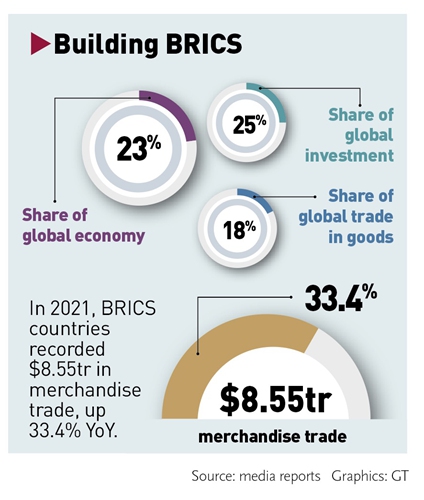
Such calls for an independent payment system are growing within the BRICS.
Marco Fernandes, a Brazil researcher at the Tricontinental Institute for Social Research, also called on the BRICS to focus on creating an alternative to the US dollar's hegemony in global transactions at a conference at the Chongyang Institute for Financial Studies of the Renmin University of China on Tuesday.
"After confiscating tens of billions of dollars in reserves and assets from countries like Iran, Venezuela and Afghanistan, the seizure by the US and the EU of more than $300 billion of Russia's reserves, triggered a global alert, reaffirming the urgency of alternatives to the dollar's dominance," Fernandes said. Analysts noted that the US' increasing use of the dollar as a political weapon in recent years - through sanctions or conditional loans - prompts countries to seek other currencies for commercial transactions and in the composition of their foreign reserves. To shrug off pressure from the US to join in its sanctions against Russia, India was exploring the possibility of using the Chinese yuan as a reference currency in an India-Russia payment settlement mechanism for its oil trade with Russia, Indian news outlet Livemint reported in May. In addition, former Kremlin economic adviser Sergey Glazyev has proposed a new global financial system - via an association between the Eurasian Economic Union and China - that would be underpinned by digital currency and backed by a basket of new foreign currencies and natural resources of the member countries, according to website The Cradle, which mainly covers West Asian geopolitics. Cao Heping, an economist at Peking University, said that there are other bilateral or multilateral global settlement systems for cross-border financial services, including China's Cross-border Interbank Payment System (CIPS). The CIPS processed around 80 trillion yuan ($11.91 trillion) in 2021, up more than 75 percent year-on-year. According to data from SWIFT, the yuan retained its position as the fifth most active currency for global payments by value in April, with a share of 2.14 percent. Cao suggested that BRICS members step up cooperation in investment and financing in major sectors such as strategic emerging industries and digital innovation in a bid to boost the use of local currencies in trade and investment settlement. BRICS countries are an important driving force for regional and global economic and trade growth. Despite the prolonged impact of COVID-19, the total volume of trade in goods of BRICS countries reached nearly $8.55 trillion in 2021, up 33.4 percent year-on-year, official data showed. The bloc accounts for 18 percent of trade in goods and 25 percent of foreign investment globally, statistics show."Along with the development of the mobile internet, digital payment has also become a tool for cross-border transactions. More opportunities are expected in this regard," Cao said.
Xi offers answers to questions of the times at BRICS forum
Chinese President Xi Jinping on Wednesday offered his answers to the questions of the times at a keynote speech in ...
A greater economic and physical integration between BRICS and emerging countries will bring immense opportunities in terms of ...
Trade between China and BRICS countries stood at 1.31 trillion yuan ($196 billion) from January to May, surging ...
With the 14th BRICS Summit to be held on Thursday, business representatives from the bloc of emerging markets ...
No matter how big the obstacles and crises are, the BRICS countries will not stop striving to establish ..







